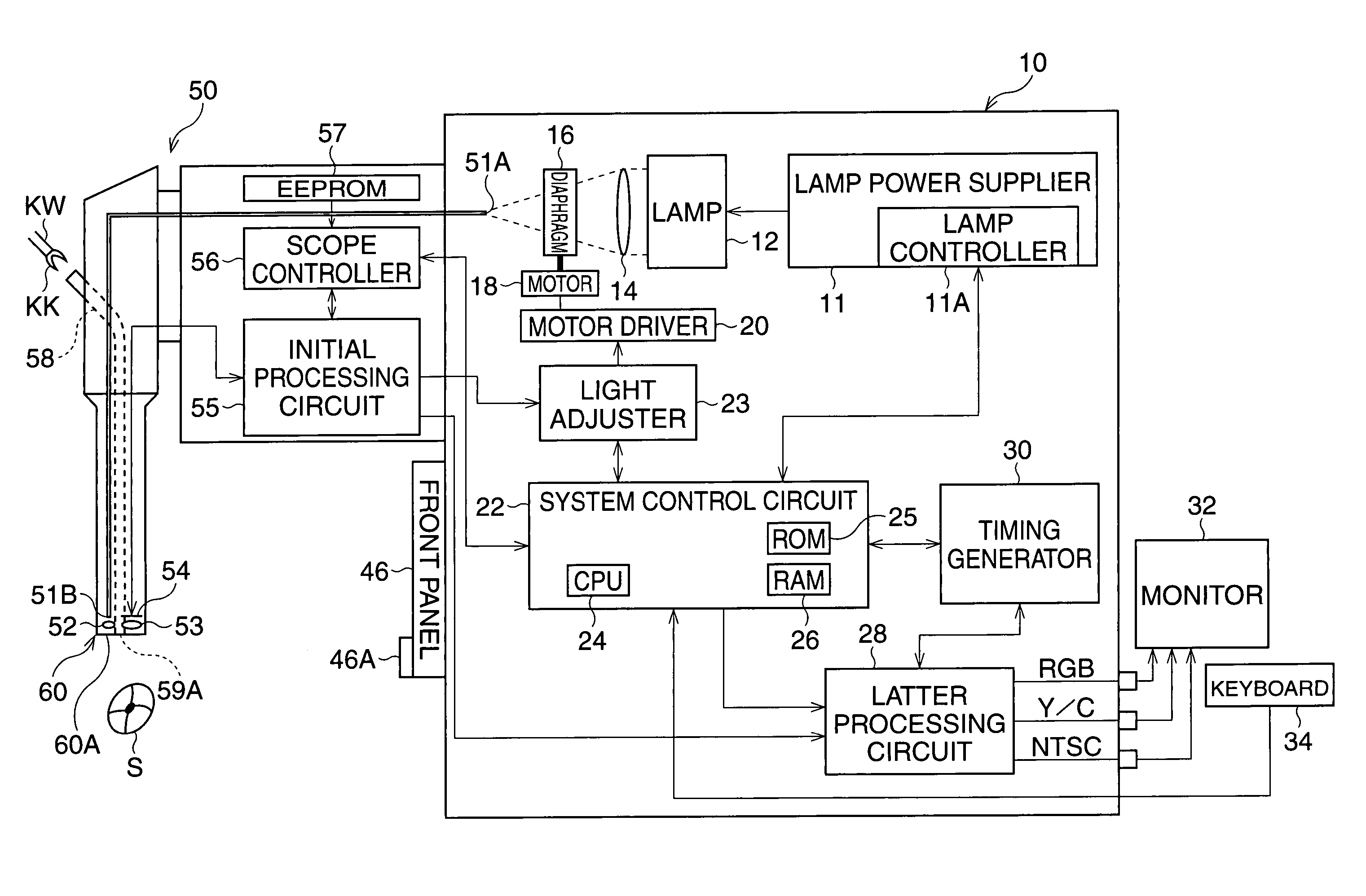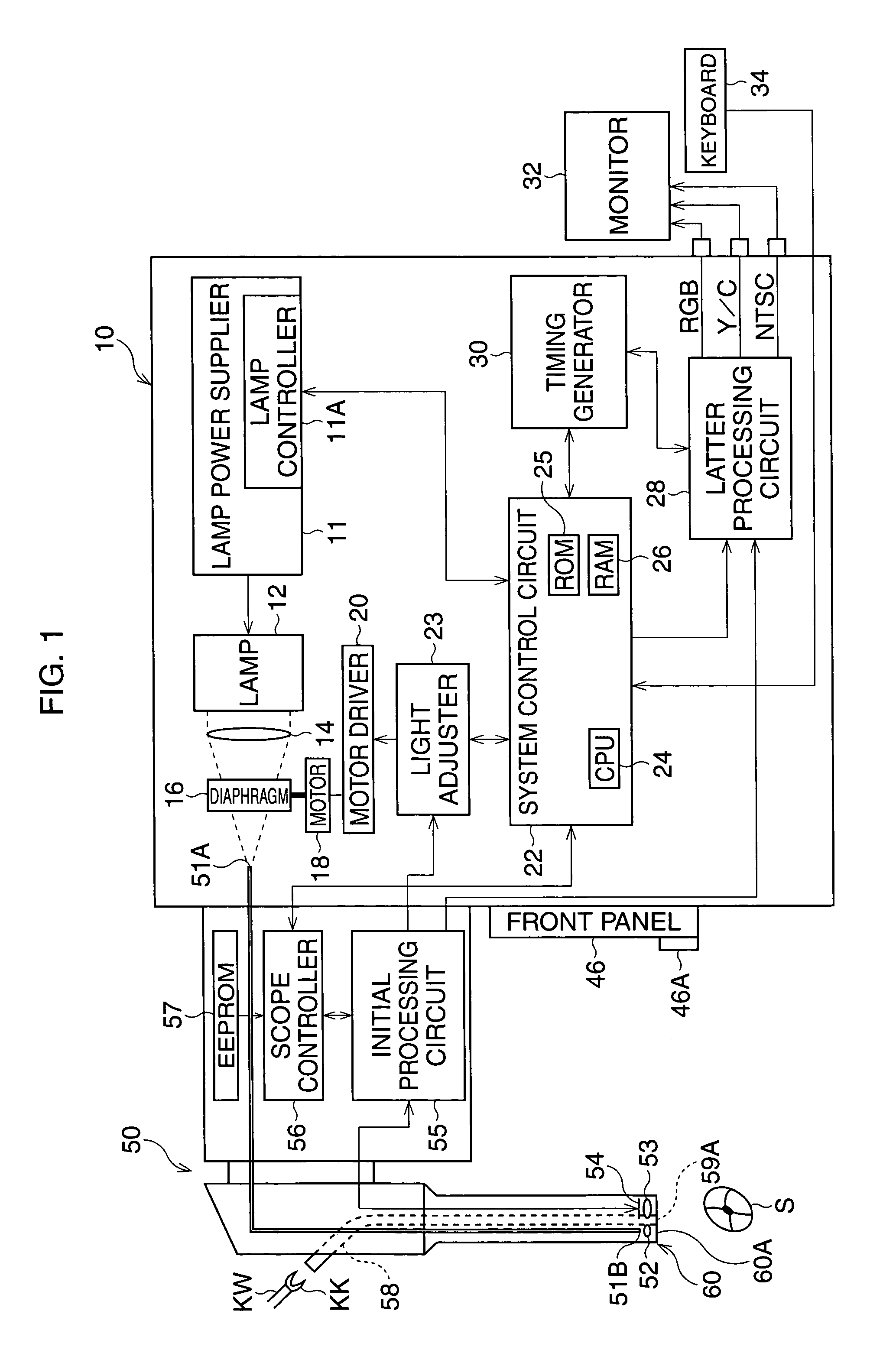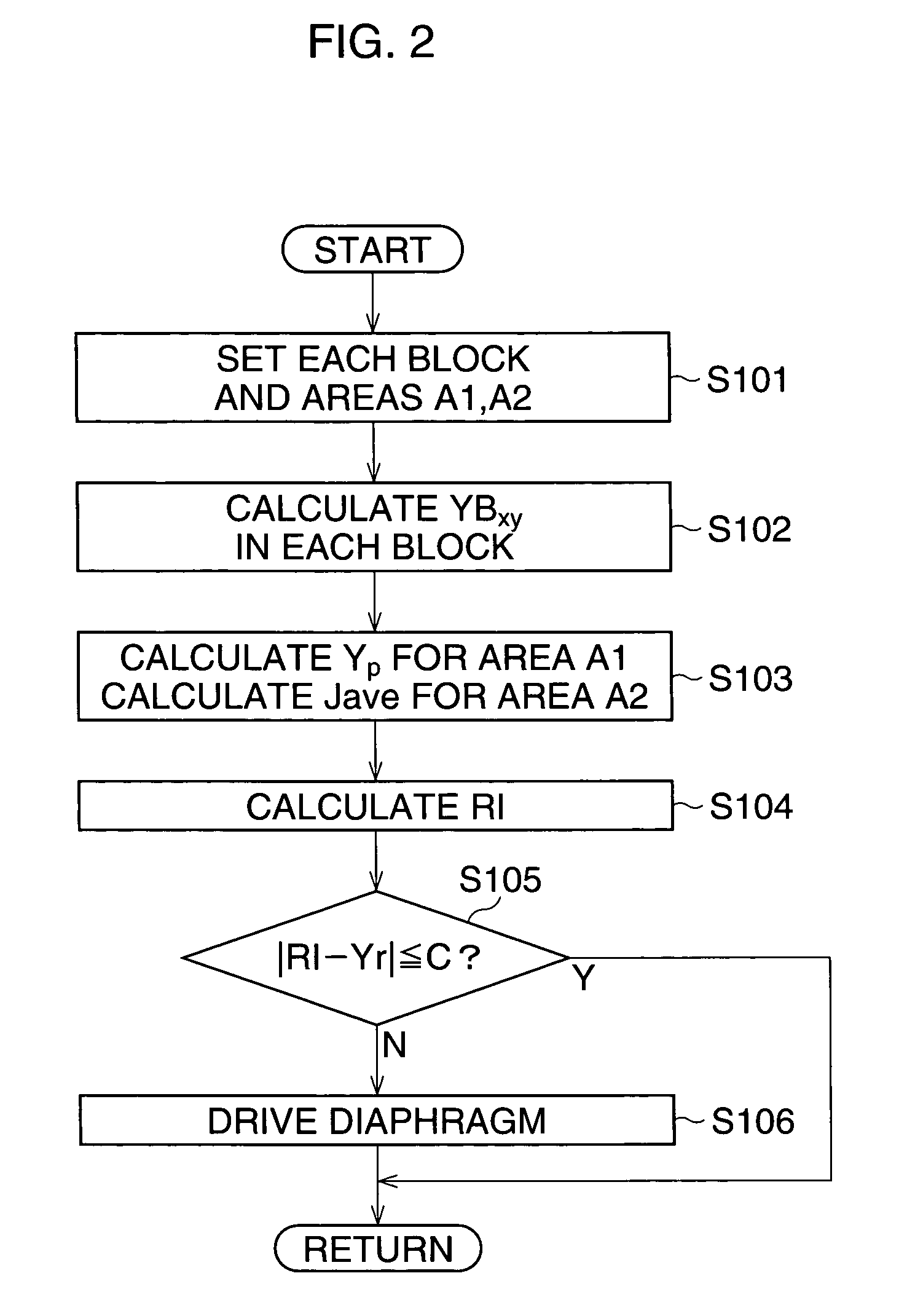Electronic endoscope apparatus
a technology of endoscope and endoscope, which is applied in the field of electronic endoscope apparatus, can solve the problems of affecting the operation or treatment of the adjustment process, the difficulty of adjusting the process, and the extremely high luminance level of the minute area of the screen, and achieve the effect of high luminance level
- Summary
- Abstract
- Description
- Claims
- Application Information
AI Technical Summary
Benefits of technology
Problems solved by technology
Method used
Image
Examples
first embodiment
[0034]FIG. 1 is a block diagram of an electronic endoscope apparatus according to the
[0035]The electronic endoscope apparatus has a video-scope 50 with a CCD 54 and a video-processor 10. The video-scope 50 is detachably connected to the video-processor 10, and further a TV monitor 32 and a keyboard 34 are connected to the video-processor 10.
[0036]When a lamp switch provided on the video-processor 10 (not shown) is turned ON, electric power is supplied from a lamp power supplier 11 including a lamp controller 11A to a lamp 12, so that light is emitted from the lamp 12 and is directed toward an incident surface 51A of a fiber-optic bundle 51 via a collecting lens 14 and a diaphragm 16. The fiber-optic bundle 51, provided through the video-scope 50, directs the light toward the tip portion 60 of the video-scope 50.
[0037]The light passing through the fiber-optic bundle 51 exits from the end surface 51B of the fiber-optic bundle 51 and is emitted toward a subject S via a diffusion lens 5...
third embodiment
[0076]FIG. 7 is a block diagram of the
[0077]In the video-scope 50′, a tool sensor SE is provided at the forceps tube 58, and the tool sensor SE is connected to the scope controller 56. The tool sensor SE detects the insertion of the treatment tool KW, and outputs a detecting signal to the scope controller 56. The scope controller 56 feeds the control signal, informing of the use of the forceps KW, to the system control circuit 22, and the detecting signal is fed from the system control circuit 22 to the light adjuster 23. In the EEPROM 57, position data of the forceps outlet 59A on the tip surface 60A is stored in advance. When the video-scope 50′ is connected to the video-processor 10, the data including the position data of the forceps outlet 59A is fed to the system control circuit 22, and then the light adjuster 23.
[0078]FIG. 8 is a flowchart of an automatic light-amount adjustment process according to the third embodiment. FIG. 9 is a view showing a metering-area of the observe...
second embodiment
[0079]In Step S301, it is determined whether the treatment tool KW is used. When it is determined that the treatment tool KW is not being used, that is the detecting signal is not input to the light adjuster 23, the process goes to Step S302. In Step S302, similarly to the second embodiment, the first peak metering-area “A′1”, the second peak metering-area “A′2”, and the average metering-area “A′3” are defined. After Step S302 is performed, the process goes to Step S304.
[0080]On the other hand, when it is determined that the treatment tool KW is being used, the process goes to Step S303. In Step S303, each block Bxy is set, and a first peak metering-area A″1, a second peak metering-area A″2, and the average metering-area A″3 are defined. In this case, the second peak metering-area A″2 is defined by removing an L-shaped area (hereinafter, called “forceps area”) KA from a rectangular-shaped form. The forceps area KA is defined in accordance with the position data stored in the EEPROM ...
PUM
 Login to View More
Login to View More Abstract
Description
Claims
Application Information
 Login to View More
Login to View More - R&D
- Intellectual Property
- Life Sciences
- Materials
- Tech Scout
- Unparalleled Data Quality
- Higher Quality Content
- 60% Fewer Hallucinations
Browse by: Latest US Patents, China's latest patents, Technical Efficacy Thesaurus, Application Domain, Technology Topic, Popular Technical Reports.
© 2025 PatSnap. All rights reserved.Legal|Privacy policy|Modern Slavery Act Transparency Statement|Sitemap|About US| Contact US: help@patsnap.com



